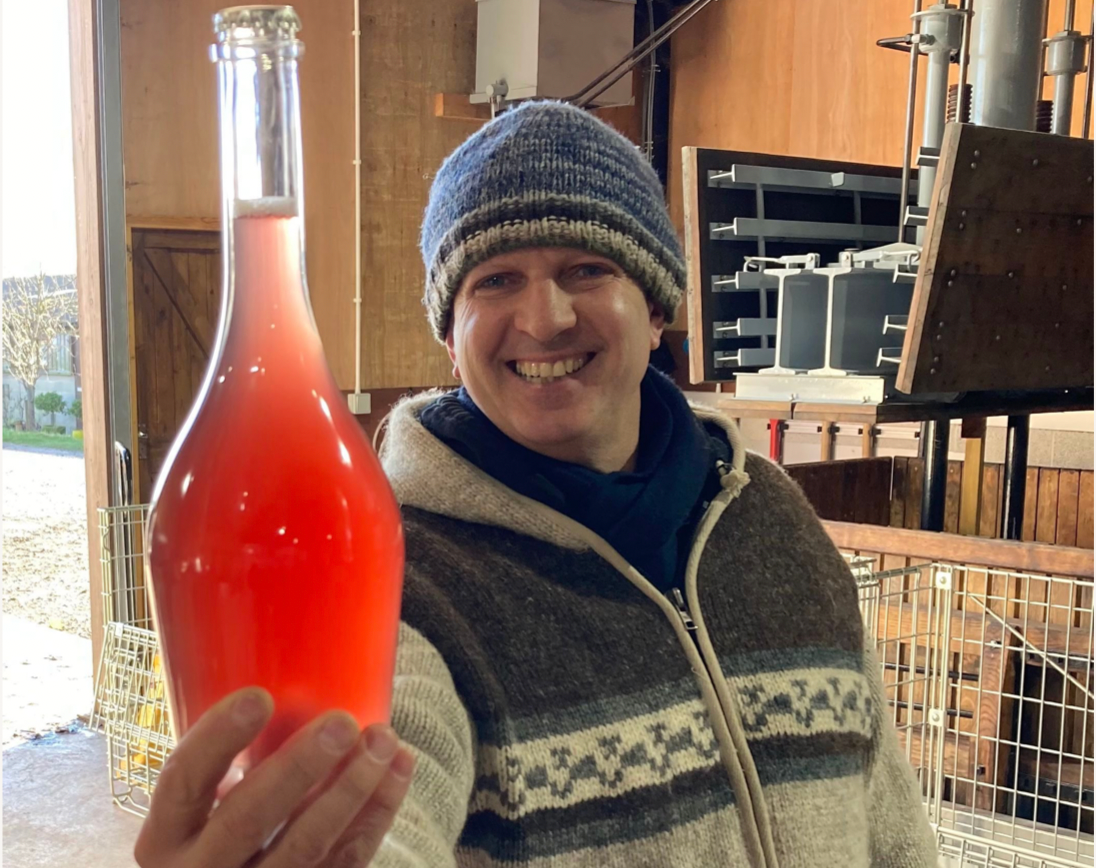When Tim Wildman MW comes up with an inspired idea over a few beers in the pub, he does not leave it behind on a beer mat, but goes out and makes it happen – are you up for joining his Lost Vineyard Preservation Society?
You have been making wine in Australia for some time but are now turning your attention to making wine closer to home – in England – how and why?
Mainly out of an overdeveloped sense of mischievousness. I moved back from Australia in 2018 having built Wildman Wine to a level where it can be managed from a distance with just a couple of trips a year. During the five years I’d been away the UK wine industry had expanded rapidly, but looked at from the outside appeared to run the risk of being over-reliant on one main style made from just three varieties, with too many brands coming from too few large, contract wineries producing identikit trad method wines with a gloss of marketing for differentiation.

One of the many neglected English vineyards that Tim Wildman MW has been able to track down as part of his Lost Vineyard Preservation Society
I thought the time was right to introduce something a bit more disruptive, more gritty, to tell a vineyard story that hadn’t been told before, about underdog grape varieties and a counter-culture wine style.
How did you decide on which vineyards and producers to work with and the regions and soils you wanted ?
The starting point for me is always the glass of wine in the final consumer’s hand. I want that glass to be a clean, fruity, fault free, juicy, aromatic, irresistible, pink pét-nat. OK, so if that’s the end goal, you work backwards from there. Obviously Pinot Noir and Chardonnay wouldn’t cut it, but I had a hunch that the deeply unfashionable German cross varieties might have potential. So I started tasting, a lot.
Siegerrebe was certainly aromatic, but can be like a cross between a teenage girls perfume and car air freshener. I wasn’t won over either by what I tasted from Ortega and Serval Blanc. But I loved Madeleine Angevine, Reichensteiner and Schönburger, so the hunt was on. I started digging through old databases and discovering obsolete websites that listed vineyard plantings going back to the early 1970s.
I spent two months in Spring 2021 contacting, or trying to contact, over two hundred vineyards across England and Wales, and of those two hundred I eventually found just two that would sell me commercial quantities of fruit.
Then what did you d0?
A large part of the detective work had been spent driving around the countryside, armed with an address if I was lucky, or sometimes just a postcode. I’d be driving down country lanes stopping every hundred yards or so and peering over the hedge to see if I could spot an old vineyard.Many of the vineyards I searched for had been grubbed up, but I was lucky to discover about a dozen that had been neglected, abandoned or simply forgotten about. I was sharing this story about ”Lost Vineyards“ on the @lost_in_a_field Instagram account and the response was so positive that it encouraged me to keep going.
Eventually we identified three Lost Vineyards that had potential and the somewhat bemused owners agreed to let us try and bring them back to life. One is in Hampshire, three quarters of an acre, planted in 1978 to eight heritage varieties. Another is in Devon, one acre planted in 1993 to twelve heritage varieties, and the most spectacular is in North Wales, a one acre block planted to a fruit salad of eight heritage varieties, above which sits a stunning and quite implausible, two acre, pure south facing, terraced vineyard cut into the side of a steep Welsh slate valley.

Herefordshire October 2021 old vine Reichensteiner planted 1973 .jpg
The moment I first laid eyes on the terraces I knew they fulfilled all the requirements of those truly special sites that are in ultra-marginal growing regions, but can achieve ripeness by their unique properties of slope, aspect, soil and drainage. The potential of this unique Welsh slate terraced site for viticulture is practically limitless. We’ve installed weather monitoring stations at three levels in the terraced vineyard to record temperature and rainfall over this year’s growing season.
If the numbers look right we’ll be looking to plant, in order of ascending warmth, Pinot Précoce, Pinot Noir, Trousseau and Gamay. I truly believe that these terraces have the potential to produce the most interesting and famous single vineyard red wine in Great Britain.
Coming back down to earth, in 2021 there was no time to do much restoration work, we hacked through the brambles and nettles and fought the birds for what little fruit there was. When I say we, it was myself and a good mate Darcy Gander, previously of Vine Works but now Darcy and his wife Tanya have their own wine brand, Bee Tree Vineyard in East Sussex. Darcy likes to say he is the tempering voice of reason to my mad ideas, but for me his knowledge of vines and English vineyards was invaluable, and the project wouldn’t have got off the ground without his help.
The fruit we foraged from the Lost Vineyards was co-fermented with the larger volumes of Madeleine and Reichensteiner from my two heritage vineyards in Kent and Herefordshire, meaning the final wine is made up of 21 different heritage varieties, albeit in small quantities, from six different English and Welsh counties. From three tonne of fruit we’ve made 1,500 bottles and 400 magnums, which we’ll be launching at this weekend’s Real Wine fair in London (May 22-23).
What started out as a simple task of finding the appropriate grape varieties to make fruity pet-nat has turned into an incredible adventure of championing heritage varieties, rescuing and restoring Lost Vineyards and telling the true history of Britain’s old vine story.
Describe the style of wine you are making and the thinking behind it?

Tim Wildman MW and his trusty dog track down another vineyard – this time in north Wales
Lost in a Field “Frolic” is a pink, frothy, fruity and fault free pét-nat. The blend of old vine, aromatic heritage grape varieties give it an amazing and intense flavour profile. When I first tasted it with Daniel Ham at the winery (Off Beat Wines) in late March we both looked at each other said “we’ve only gone and bloody well made Fanta”. I gave a sneak preview to the staff at Seven Cellars in Brighton earlier this week and my favourite comment was ‘summer in a glass”. I’ve always joked on social media that the aim with my Aussie pét-nats was for them to be #NotShit. I think we’ve ticked that box with the English wine, and then some.
Are there many English pet nats to compare it to?
When Daniel and Nicola Ham at Off Beat Wines agreed to take me on as a contract client last year one of the first things we did was to arrange an English pét-nat tasting, to benchmark the styles that were currently on the market. We managed to get together about a dozen, and I tasted the three or four that we missed at various times over the summer. It’s a pretty mixed bag out there right now, a lot of the wines still have their training wheels on. With Lost in a Field, I brought to bear all my nine years of knowledge, and mistakes, from making pét-nat in Australia. I think it should stand out in the market as something a little bit different, and quite good.
You are not just making a wine and creating a new English wine brand but are looking to create a community behind the whole concept of your wine? Tell us about your Lost Vineyard Preservation Society?
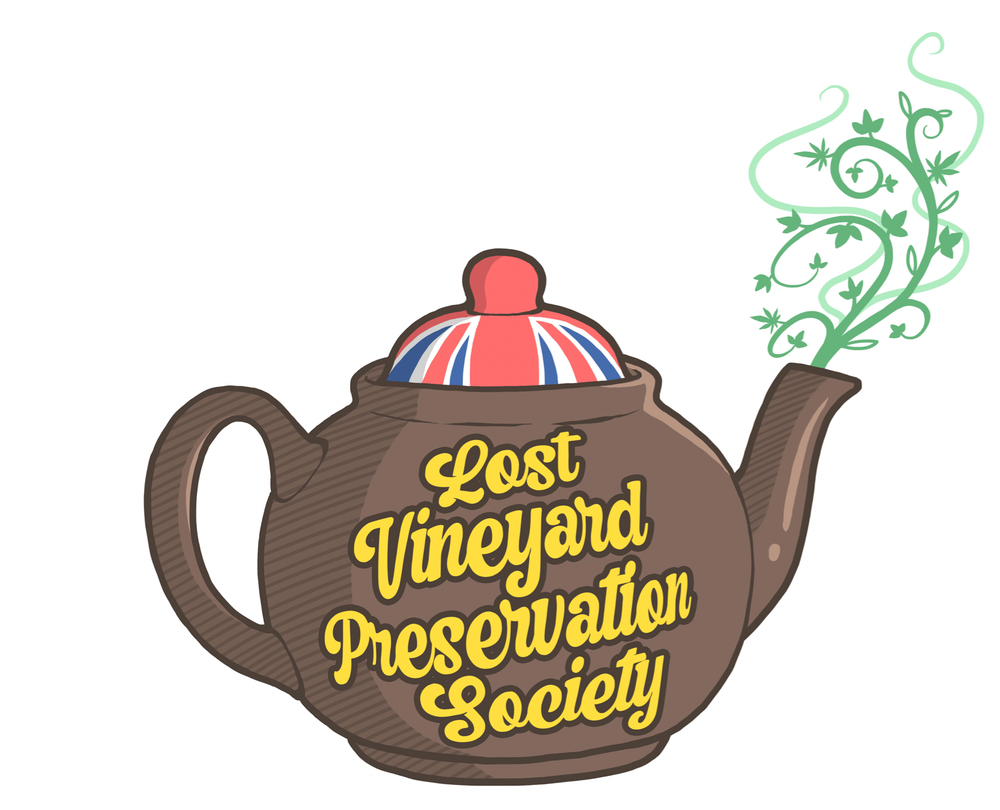
You can join Tim Wildman MW and his Lost Vineyard Preservation Society here
It’s not commercially viable to restore abandoned vineyards using a conventional business model, there’s simply no return in working all year on a one acre plot that may give you half a tonne of fruit, let alone paying contractors to do the work. However, the feedback I’d been receiving from social media encouraged me to try and find a way to get the project off the ground. Initially we looked at financing the initiative through a TV series and City backers, and we had a couple of meetings with production companies and potential investors who were interested, but it just didn’t feel right.
Then in January, over a few pints of Harveys, we decided to do a complete 360 degree about-turn. Instead of raising funds to pay third parties to help us rescue these vineyards, we’d take a gonzo approach, to harness the interest and energy we’d received on Instagram, and look to build a grassroots community of willing and enthusiastic volunteers, Once we’d made that crucial decision, everything else just clicked into place.
The Lost Vineyard Preservation Society will have four main elements to it. Firstly, groups of volunteers coming out to the vineyards to help prune in winter and weed and carry out canopy management in the summer. We’re calling this ‘Lost Under the Stars’ camping weekends, where volunteers will work in the day then we’ll set up tents in the vineyard at night, enjoying great food and wine around the fire pit after a hard days work.
In October we’ll hold ‘Harvest Tea Parties’ where we invite the local village and community where the Lost Vineyard is located to help bring in the harvest and enjoy a long table lunch. There’ll be collaborations with like-minded businesses, partnering up with local food, farming, craft and beverage companies operating near the Lost Vineyards to benefit from crossover marketing partnerships. Finally, once we’ve carried out a full assessment of the vineyard’s potential after this years growing season, we’ll set up a crowdfunding campaign to pay for capital costs such as re-trellising with new posts and wires.
You really want to create a long standing community – how are you going to do that?
There’ll be incentives for people to join, not only the unique experience of the Lost Under the Stars camping weekends, but I’ve bottled a third of the 2021 vintage into magnums with waxed tops, about 400, which will only be available to retailers, wine bars and restaurants who join the club.
What sort of people do you want to attract? Trade or consumers of English wine?
Everyone is welcome. I don’t want this to be “them” and “us”, at the end of the day, we’re all consumers, we’re all girls and boys who just want to have fun.
What was the inspiration for wanting to do this?
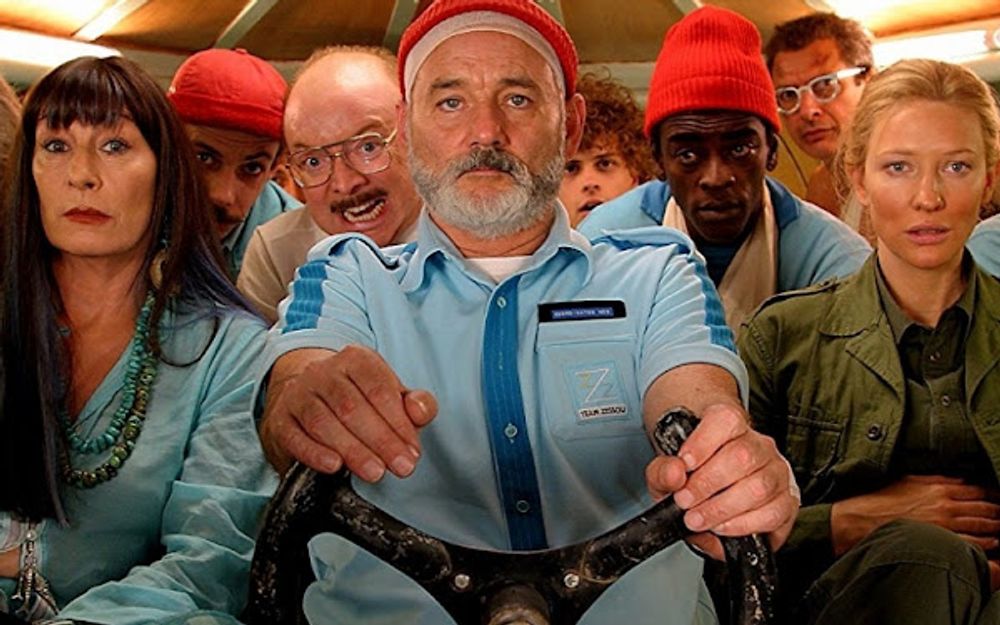
Who does not want to wear a red beanie on go on adventures?
If I’m being honest it’s the Wes Anderson film The Life Aquatic. Who doesn’t want to be in a club where everyone wears a red beanie hat and goes on adventures? If I ever make any money I’ll buy a boat.
How are you going to fund the Society?
We’ll be inviting volunteers from both the public, trade and local communities to help with the initial vineyard clearing work. The second stage will involve a crowdfunding element to pay for capital cost such as trimming equipment, trellising posts and wires.The initiative is based on a belief that consumers are hungry for unique experiences and will be excited to join us on our mission. These stories of endangered heritage varieties, old vines and Lost Vineyards have the ability to crack open a concept of vines and wine that really cuts through and connects with consumers, and enthuse them in a way that standard wine narratives often fail to achieve.
What are your initial plans for the actual wine in terms of distribution?

Tim Wildman MW with his Astro Bunny pet nat wine that he has been making in Australia and now has a cult following
I’ll be distributing it myself to the trade and there’ll be a list of stockists where consumers can buy the wine on the website www.lostinafield.com I think it’s really important for a new brand to be out thereyourself talking to people, telling the story. I spent the first five years in Australia building the Astro Bunny brand by carrying a rucksack of samples, knocking on doors and wearing out the shoe leather. Nothing beats it.
What are your ultimate goals for English wine and the Lost Vineyard Preservation Society?
I’m exited by the potential of a wine brand that has consumer engagement built into its DNA from the start. And by engagement I’m not talking clicks, likes and followers, I’m talking about hands-on engagement and enjoyment, getting down and dirty in the vineyard then sharing food and wine afterwards. This is true experiential wine tourism as opposed to a visit to a cellar door which is more of a retail experience. We’ll be building our own community, one bottle and one vine at a time. I want to collapse the space between producer and consumer, we’re all going to be on this adventure together.
Although the wine brand itself is Lost in a Field, the main channel for communication with both trade and consumer will be the Lost Vineyard Preservation Society. Instead of the message being “Buy my wine” it will be “Join our club”, and I think that’s kinda cool.
How about your Australian wines – how are they doing?
Not too bad thanks. This year we grew volume by 40% taking production up to 35,000 bottles, which will allow us to expand our export markets from seven to seventeen, look out Mexico, South Korea and most of Scandinavia. We’re now the second largest pét-nat brand in Australia by volume, but number one by value. Last month Astro Bunny was listed by The Wine Society, its first Aussie pét-nat, and just this week Astro Bunny is featured as Wine of the Week on JancisRobinson.com with an enthusiastic article by Max Allen. For a natural, counter-culture wine style to storm the bastions of the retail and journalistic establishment with a cosmic pink bunny tripping out on cloudy natty juice is pretty satisfying to say the least. It’s taken nine years to become an overnight success.
Have you been able to go and work on the harvest?
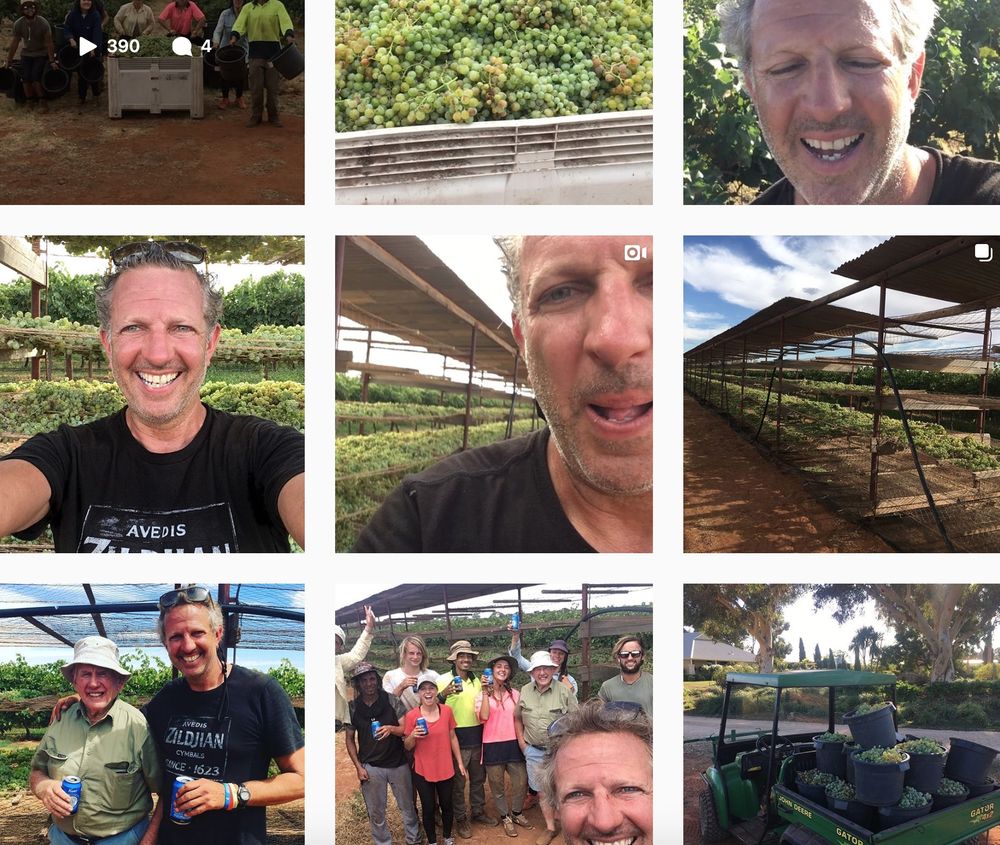
Winemaking warts and all – Tim Wildman MW has helped create a following for his Australian wines by sharing his life and experiences on Instagram and other social media platforms
I couldn’t get out in 2021 for obvious reasons, but well established relationships with everyone from the growers through to dry goods suppliers and the winery saw us through. I couldn’t have done it without the help of two really good mates who walked the vineyards and made the key decisions on picking dates, shout out to Giles Cooke MW (Thistledown) and Brendan Carter (Unico Zelo).
What did you do during the pandemic with the Aussie wines?
We didn’t miss a beat, sales grew by 25% and I managed it all for two years sitting at home in Brighton in my pyjamas.
When you first started pet nats were very much in their infancy as a market. How do you see the category now?
In Australia pét-nat is fully established, wine stores have dedicated pét-nat fridges, restaurant lists have pét-nat pages. Australia’s largest retailer, Dan Murphys, is about to roll out natural wine sections in hundreds of stores, with pét-nat to the fore. The rest of the world isn’t quite there yet. I’d say the category is growing in every market, with the major trend being that consumers are less tolerant of the more excessive faults, such as gushing or mousiness.
In the UK, from a production side, it reminds me of Australia 10 years ago. About a dozen people having a crack, many of them not really knowing what they’re doing and with mixed results, and the consumer giving faults a free pass for novelty value. I’m hoping that “Frolic” will sit up there with producers I really admire, like Will Davenport, and show people that English pét-nat can be all about pleasure without the pain.
Why do you think pet nats are such an interesting wine to make and drink?
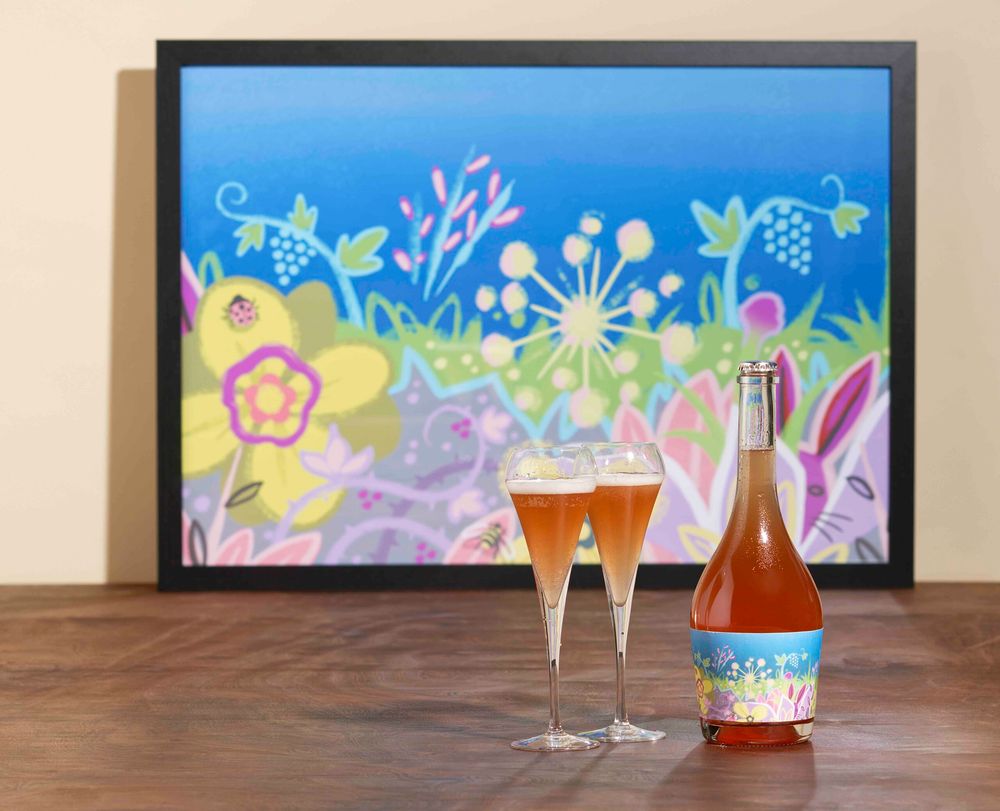
Tim Wildman’s new English wine pet-nat – Lost in a Field ‘Frolic’
You can divide the whole world of wine into any number binary categories, fun versus fine, conventional versus natty, and pét-nat is pretty much the most fun, natty wine you can make. As a style it sits outside tired tropes such as food and wine matching, pét-nat is more about location and wine matching, or mood and wine matching. On the Wildman Wine website the serving suggestion for Astro Bunny is “beach or bus, two people 10 minutes”.It’s a wine that demands to be smashed and crushed, preferably out of plastic cups.
The colourful, punk aesthetic of many pét-nat labels has more in common with craft beer than mainstream wine, and the yeasty, bottle conditioned flavours are very familiar to consumers used to lambic and sour beers. Pét-nat is the antithesis of Boomer wine, and has become the gateway beverage for a generation of millennial and Gen Z craft beer and cocktail drinkers. What’s not to like?
Anything else to say?
If you’re heading to the Real Wine Fair this weekend come by table 132 and say hello. We’re signing people up for the Lost Vineyard Preservation Society and our first Lost under the Stars camping weekends in June.
- You can find our more about Tim Wildman’s English wine adventures on his Lost in a Field website here. Or on Instagram here and at his Wildman Wines website here.
- Tim will be talking about his Preservation Society as part of a panel at the London Wine Fair on June 8 looking at how brands, retailers and wine producers attract and build up loyal engaged communities of consumers. It takes place at 1pm on June 8 at London Olympia.
- For details on this weekend’s Real Wine Fair click here.
